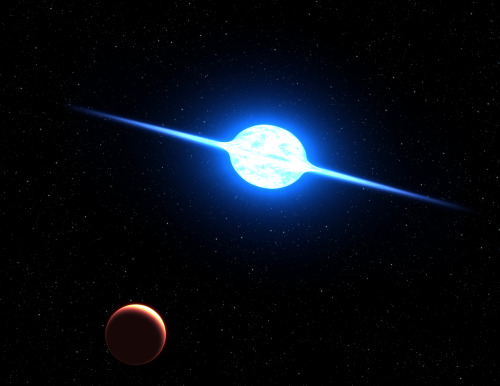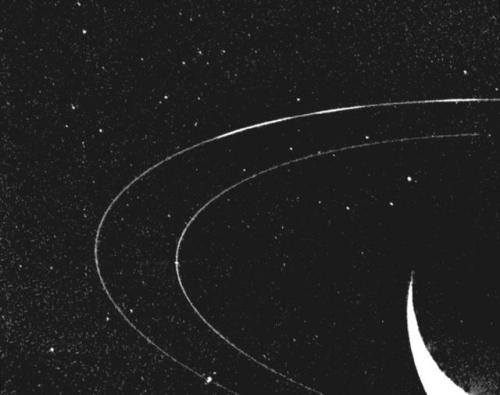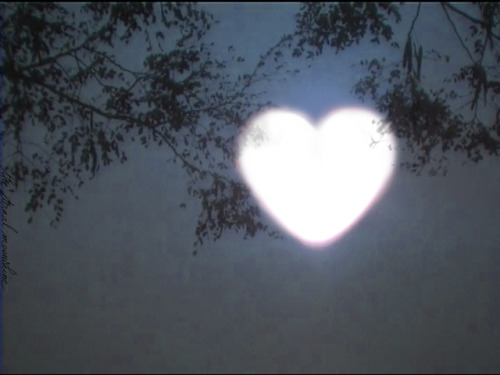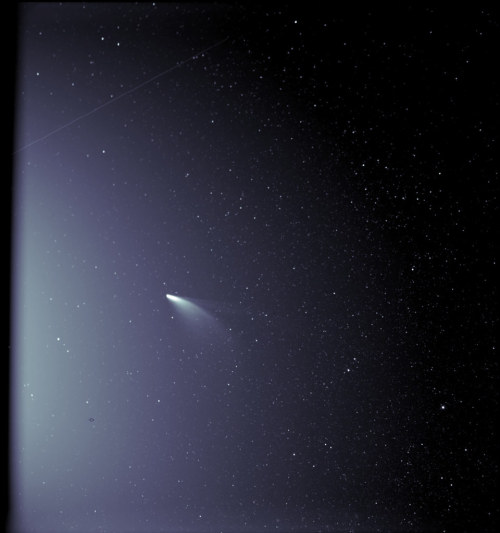Sidusglacies - ⚡️

More Posts from Sidusglacies and Others

Ben Lewis Giles - Astronaut, date unknown

This is an artist’s concept of the fastest rotating star found to date. The massive, bright young star, called VFTS 102 rotates at about two million kilometres per hour. Centrifugal force from this dizzying spin rate has flattened the star into an oblate shape, and spun off a disk of hot plasma, seen edge on in this view from a hypothetical planet. The star may have “spun up” by accreting material from a binary companion star. The rapidly evolving companion later exploded as a supernova. The whirling star lies 160 000 light-years away in the Large Magellanic cloud, a satellite galaxy of the Milky Way.
Credit: NASA/ESA and G. Bacon (STScI)

Image of the rings of Neptune captured by the space probe voyager 2 in August 1989.
Credit: NASA/JPL

Astronomy vignettes. Learning about our world. 1932.

Heart-shaped Moon

NASA’s Parker Solar Probe Spies Newly-Discovered Comet NEOWISE

“One of the most actively changing areas on Mars are the steep edges of the North Polar layered deposits. This image from NASA’s Mars Reconnaissance Orbiter (MRO) shows many new ice blocks compared to an earlier image in December 2006. An animation shows one example, where a section of ice cliff collapsed. The older image (acquired in bin-2 mode) is not as sharp as the newer one.” Credit - nasa.gov
As the Fog Rolls In

Although we talk about fog rolling in, it’s rare for us to have a perspective where we can truly appreciate that flow. But this photograph from Tanmay Sapkal provides just that for the low summer fogs sweeping over Marin, CA. (Image credit: T. Sapkal; via NatGeo) Read the full article
-
 ratgirl-deluxe liked this · 2 months ago
ratgirl-deluxe liked this · 2 months ago -
 dailycreature reblogged this · 2 months ago
dailycreature reblogged this · 2 months ago -
 hollow-port liked this · 1 year ago
hollow-port liked this · 1 year ago -
 pridefell reblogged this · 1 year ago
pridefell reblogged this · 1 year ago -
 unadulteratedarbiterpainter liked this · 1 year ago
unadulteratedarbiterpainter liked this · 1 year ago -
 melonipinjusic liked this · 2 years ago
melonipinjusic liked this · 2 years ago -
 sasuke3232 liked this · 2 years ago
sasuke3232 liked this · 2 years ago -
 rose-dewdrop liked this · 3 years ago
rose-dewdrop liked this · 3 years ago -
 diocito liked this · 4 years ago
diocito liked this · 4 years ago -
 boyist liked this · 4 years ago
boyist liked this · 4 years ago -
 love-sick-bug liked this · 4 years ago
love-sick-bug liked this · 4 years ago -
 melancholyamor liked this · 4 years ago
melancholyamor liked this · 4 years ago -
 ladysnowmanofnoir liked this · 4 years ago
ladysnowmanofnoir liked this · 4 years ago -
 evilsteve liked this · 4 years ago
evilsteve liked this · 4 years ago -
 ghostlineage liked this · 4 years ago
ghostlineage liked this · 4 years ago -
 marstherian liked this · 4 years ago
marstherian liked this · 4 years ago -
 clumsycutepinkbunny liked this · 4 years ago
clumsycutepinkbunny liked this · 4 years ago -
 touhou-memories liked this · 4 years ago
touhou-memories liked this · 4 years ago -
 obtuse-triangle liked this · 4 years ago
obtuse-triangle liked this · 4 years ago -
 karakalix liked this · 4 years ago
karakalix liked this · 4 years ago -
 roundedbyasleep reblogged this · 4 years ago
roundedbyasleep reblogged this · 4 years ago -
 codeforsomethinggay liked this · 4 years ago
codeforsomethinggay liked this · 4 years ago -
 pixshi reblogged this · 4 years ago
pixshi reblogged this · 4 years ago -
 bhellorian liked this · 4 years ago
bhellorian liked this · 4 years ago -
 princeznadive liked this · 4 years ago
princeznadive liked this · 4 years ago -
 chicocor liked this · 4 years ago
chicocor liked this · 4 years ago -
 cachinga-wheatlesby liked this · 4 years ago
cachinga-wheatlesby liked this · 4 years ago -
 sometimes-soulmates reblogged this · 4 years ago
sometimes-soulmates reblogged this · 4 years ago -
 sweetsuke liked this · 4 years ago
sweetsuke liked this · 4 years ago -
 supraobsessed reblogged this · 4 years ago
supraobsessed reblogged this · 4 years ago -
 msoora liked this · 4 years ago
msoora liked this · 4 years ago -
 supraobsessed liked this · 4 years ago
supraobsessed liked this · 4 years ago -
 clemified reblogged this · 4 years ago
clemified reblogged this · 4 years ago -
 clemified liked this · 4 years ago
clemified liked this · 4 years ago -
 paul1st4-011 liked this · 4 years ago
paul1st4-011 liked this · 4 years ago -
 paradizetobefound liked this · 4 years ago
paradizetobefound liked this · 4 years ago -
 r33naytealeaves reblogged this · 4 years ago
r33naytealeaves reblogged this · 4 years ago -
 sleepytown-cemeteries reblogged this · 4 years ago
sleepytown-cemeteries reblogged this · 4 years ago -
 bonytanks reblogged this · 4 years ago
bonytanks reblogged this · 4 years ago -
 socialist-fish liked this · 4 years ago
socialist-fish liked this · 4 years ago -
 oneisan reblogged this · 4 years ago
oneisan reblogged this · 4 years ago -
 sealedsw-rd reblogged this · 4 years ago
sealedsw-rd reblogged this · 4 years ago -
 realignbyredvox liked this · 4 years ago
realignbyredvox liked this · 4 years ago -
 sidusglacies reblogged this · 4 years ago
sidusglacies reblogged this · 4 years ago -
 roxtries liked this · 4 years ago
roxtries liked this · 4 years ago -
 astral---injection reblogged this · 4 years ago
astral---injection reblogged this · 4 years ago
